While driving a boat can be very similar to driving a car there are some tremendous differences. These differences stem not only from the actual act of operating the boat but in the rules associated with the terrain you are operating in. Just as we have to learn the rules of the road as drivers, boaters must learn to abide by the rules of the sea and use proper boat navigation rules for their vessels. While it may seem like a daunting task, with lots of practice and patience, just as many have learned to drive, learning to operate a boat is possible too. So, before you start your engines and sail away, let’s go over a few important boat navigation rules.
Boating Basics
If you thought that all you had to do to drive a boat was turn the key, start the engine, and steer the boat, you’re unfortunately missing a few crucial elements. Driving a boat in Rhode Island requires a lot of preparation and believe it or not, background knowledge. Your boat is one of the most important things to be aware of before you actually begin operating. Make sure you take the time to get to know your boat and everything about it as well as how it operates. If you know your boat, you will know what it needs, when it needs it, and this will allow you to keep it properly maintained at all times. Knowing your boat is only half of it; you should also learn and know all of the boating terms so that you are able to effectively communicate with others in your boating community or even on your own boat.

One of the big differences between driving a car and operating a boat is the actual terrain they both travel on. Cars drive on the solid road while boats operate on constantly shifting, and changing water. When a car is parked we know that it isn’t going anywhere, however, a boat is very different in that aspect. Even though you may shut off your engine and drop anchor your boat will still continue to move because it is floating on moving water. Many forget this important detail and that results in a lack of attention after they have come to a stop on the water. Make sure that you are always paying attention to your surroundings even when you have stopped moving, especially when boating in Rhode Island.
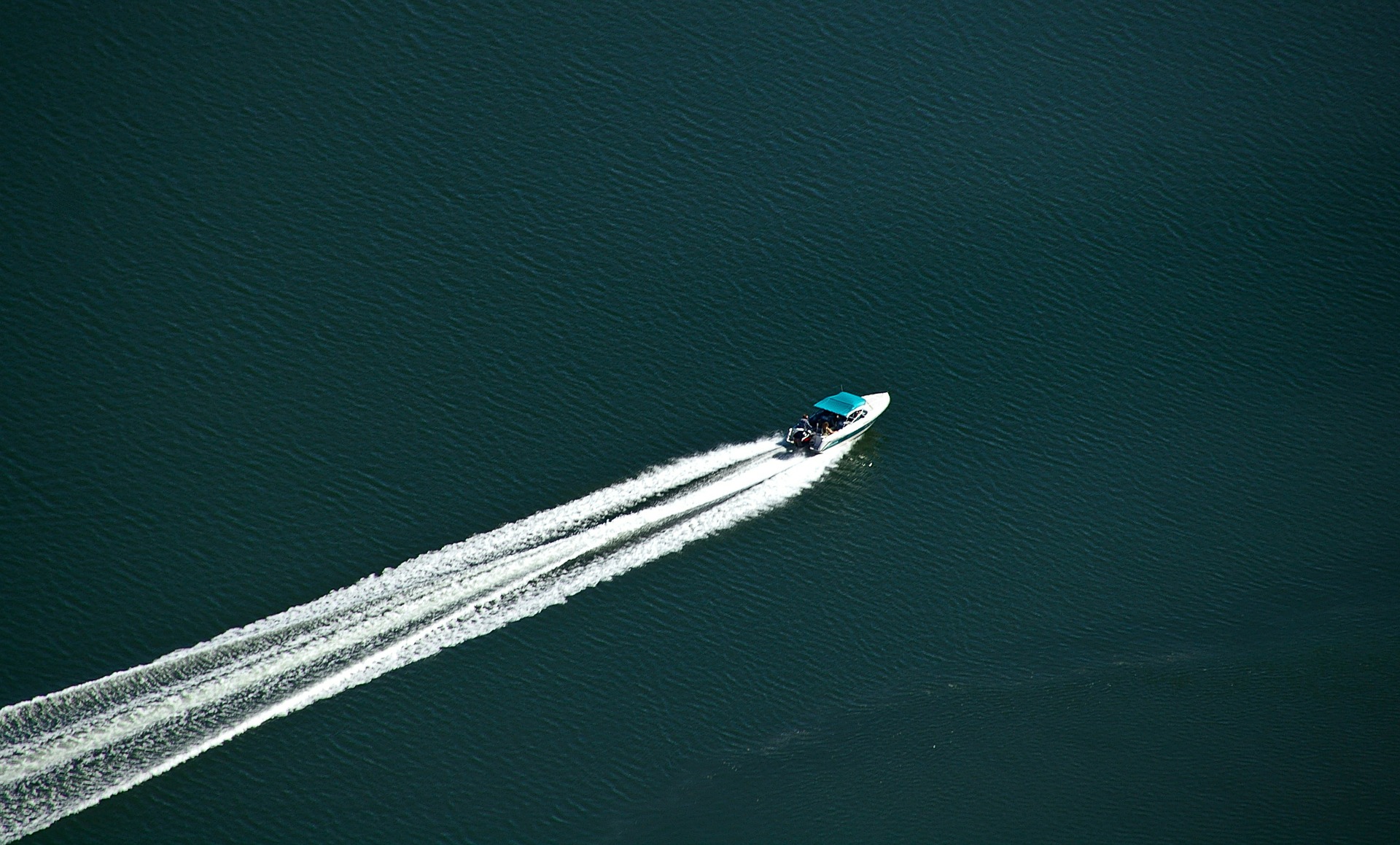
The ocean is the road for boats and has rules that must be followed to ensure that all boaters remain safe too. To successfully operate your boat you need to make sure that you are up to date with all of the local RI boating regulations because these differ from state to state. The United States Coast Guard provides a great deal of useful boat navigation information with their
state boating law manual so that all boaters stay informed about what their specific state requires of them. Just as RI driving rules state that teenagers at the age of 15 must complete drivers education in order to obtain their driving permits, some states may require you to take a boating safety course. According to Boat Ed, RI boating laws state, “All those born on or after January 1, 1986, are required to pass an approved boater education course before they legally may operate any vessel powered by a motor of more than 10 horsepower” (pg 35). Upon completing this course boaters are given a certificate of completion that serves as a boating license certifying that they are legally allowed to operate the boat. This certificate is something that must be carried by the operator on board just as a driver’s license should be carried with the driver at all times.
When you’re out on the water, be alert and pay attention to speed signs because those are there to protect not only you but the marine life as well. You are navigating in their home so be respectful and watch out for them too. Slower speeds are not only safer for marine life but also are great for new boat operators to learn how to navigate. The water can be tricky and learning at lower speeds and in a small boat can really help.
What Are the RI Boat Navigation Laws?
Boat navigating may seem entertaining however, there are many rules and regulations that boaters need to be aware of when operating their vessels. These “Rules of the Road,” as the USCG refers to them as, are the boat navigation rules that all boat operators must have knowledge of. While the USCG provides a guide for understanding these many rules, it is important to note that these can vary in different states. In other words, some RI boating laws may be different than boating laws in Tennessee. That’s why it is important to familiarize yourself with state boating laws as well. According to the
National Association of State Boating Law Administration (NASBLA), RI boating law states:
- Search & Rescue
In Rhode Island, the agency responsible for search and rescue operations is the RI DEM Law Enforcement. They are also responsible for all victim recovery if and when needed.
- Boating Education
Boating education is required for, “all PWC (Personal Watercraft) operators, or those born after 1-1-86 operating a vessel powered by an engine of 10 or more horsepower.” This also includes PWC renters as well as residents of the state.
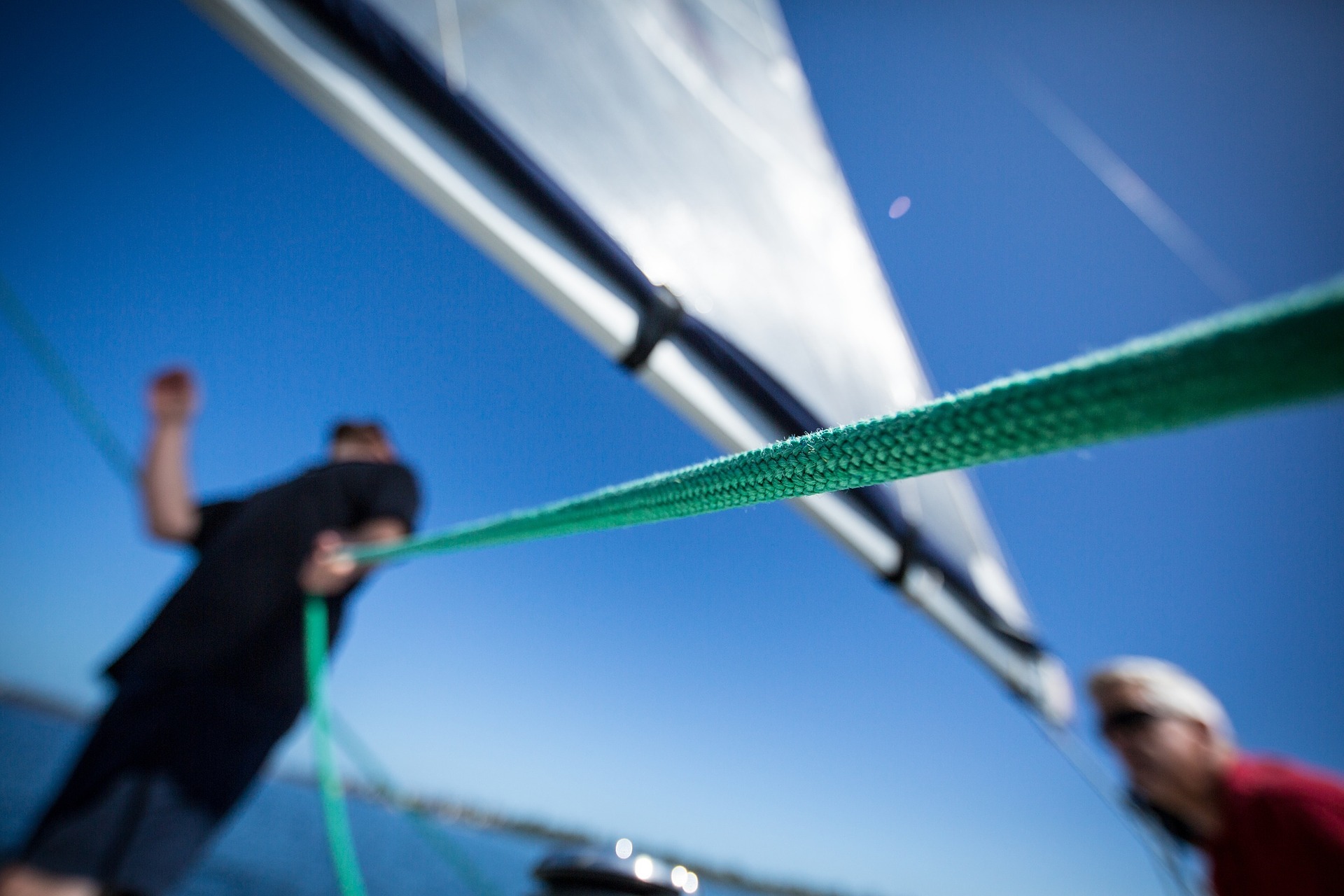
- PWC Operation
Rhode Island requires everyone on board a vessel to be wearing a USCG approved personal flotation device (PFD), or life jacket. The fine for violating PFD regulations is $100.
- Blood Alcohol Content (BAC)
The state of Rhode Island considers anyone with a blood alcohol measure of 0.08 to be under the influence. There is no lower threshold for BAC when it comes to minor boaters. If a boater receives a BUI it will not affect their automobile privileges. BAC and BUI testing include both breath and urine tests.
These are just a few of the RI boating regulations that boaters must know and understand. The complete list is offered by the NASBLA manual online. As an avid boater, these many manuals should be read thoroughly so that trouble can be avoided and passengers and operators alike can have an enjoyable boating experience.
How Do I Drive a Boat?
As we have previously established, the state of Rhode Island does require all boat operators to go through a boaters education course, however, there are a few things that we can mention here that you should always keep in mind. According to Lake George, you should:
- First and Foremost
- Make sure that you ALWAYS turn on the ventilation blowers before you start the engine for a few minutes. This ensures that all of those harmful gases leave the engine and no harm comes to you, your boat, or your passengers.
- Check the bilge pump for water and turn it on if you need to.
- NOW turn on the ignition so that you can look at the engine and see if there is something wrong or if there is unwanted water coming out of a hose.
- Check your gauges and know where they should be:
- RPM should be at 3,000 at 30 MPG
- Oil pressure should be about 60
- Engine temperature should be from 160-175

- Next Steps
- Know the day and night speed limits of your marina as well as the maximum speed limits in places like the docks, anchored vessels, etc.
- Make sure that you are ALWAYS 100 feet away from the shore and 500 feet away from jet skis.
- If you want to speed up when you are able, just lift up the trim and level out the boat afterward.
- Know the priority of vessels so that you know who has the right of way. Those with low priority must stay out of the way of those with high priority: (From highest to lowest priority)
- A vessel that is unable to move
- A vessel that has restricted movement
- A vessel that is actively fishing
- A sailing vessel
- A power-driven vessel
- Know the meaning of the different colored buoys and markers
How Do I Read Water Buoys and Markers?
Many don’t understand the big role that the different colored buoys and markers play on the water for boaters. These buoys are in place to direct boaters and tell them where to go and which side they should be navigating on. Buoys are the road signs of the water and every boater should know and understand how to properly read them. According to the
USCG’s Navigation System Manual, there are two main types of navigation aids, buoys that float on the surface of the water but are moored at the bottom of the water, and beacons that are permanently attached to the bottom of the water. Some buoys have lights while others do not, as with beacons. Buoys with a round shape and a flat top are called a, “can,” while buoys with a round shape and a cone top are called a “nun.” Similarly, a beacon that has a light on it is referred to as a “light,” while those without lights are to as a “daybeacon.”
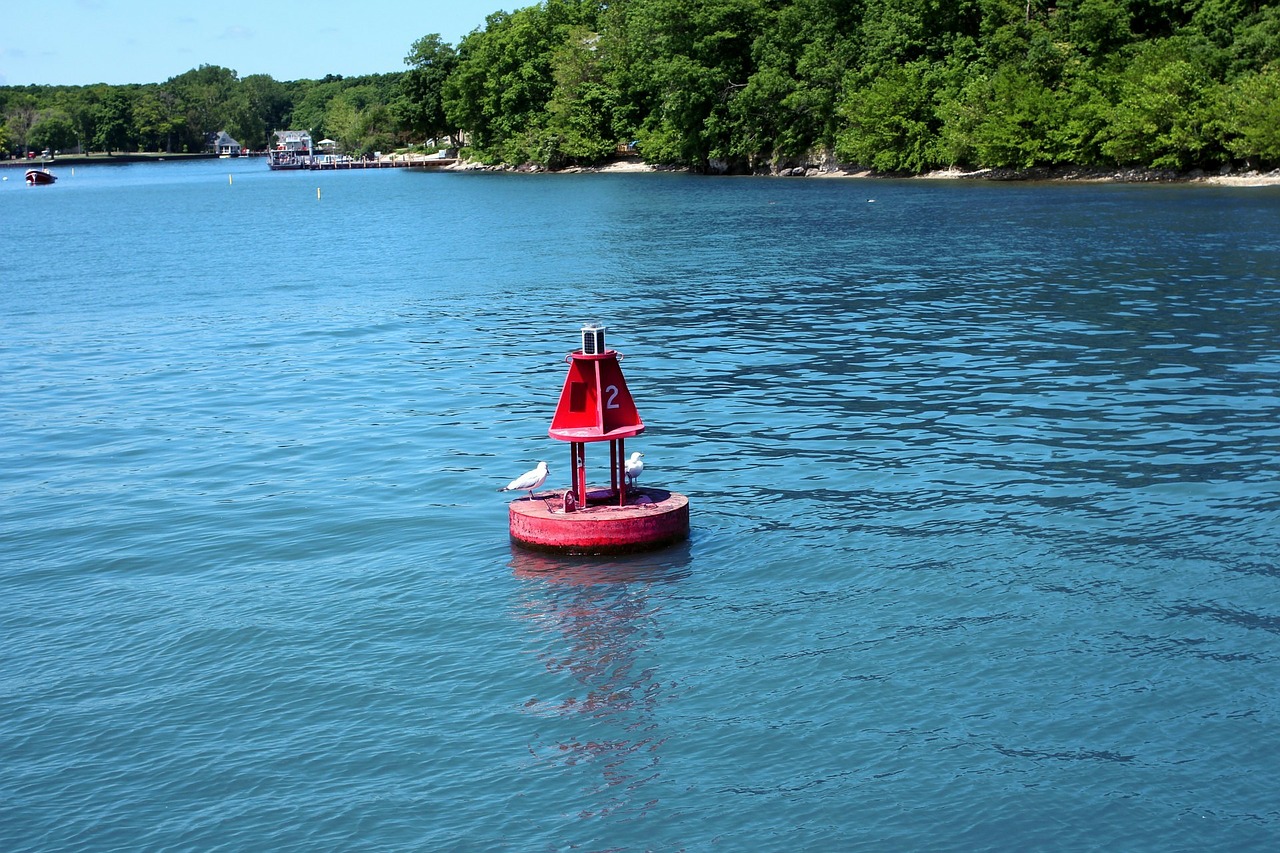
- “The Three R’s” & the Red Buoys
While the signs, numbers, and colors may seem daunting to remember, the USCG reminds boaters of the “Three R’s,” “Red, Right, Returning.” All this catchy phrase means is that when you are navigating back into a channel out from the open sea, all red navigating aids should be on the starboard (right) side of your boat. Each of these red aids has even numbers that gradually increase as you navigate upstream and into the channel. These red aids are also referred to as Starboard Hand Buoys since they should be on the starboard (right) hand side of your boat when coming back into the channel.
- The Green Buoys
These are also referred to as Port Hand Buoys due to the fact that they must stay on the port (left) hand side of your boat when navigating back into the channel from the open ocean. However, when navigating out of the channel towards the open ocean these should always be on the starboard (right) side of your boat. Each of these navigating aids is labeled with an odd number that gradually decreases as you begin to slowly reach the open ocean.
- Preferred-Channel Aids & Junction Day Beacons
These buoys, or daybeacons, usually are made of both red and green horizontal bands with either the red or green color at the top of the daybeacon. The interchanging red and green colors are important and must be noted because they indicate which direction boaters must be traveling in because the channel has now divided. When entering the channel from the open ocean, the red band should always be on the top and to the starboard (right) side of your boat, meaning that you should stay to the right side of the channel. When leaving the channel towards the open ocean, the green band should always be on the top and to the starboard (right) side of your boat, meaning that you should now be navigating on the left side of the channel with the green aids on your right-hand side.
- Safe Water Marks
These buoys are characterized by red and white vertical stripes and can be either lighted or unlighted. They are used to mark fairways, which are deep channels that go through harbors, mid-channels, and offshore approach points.
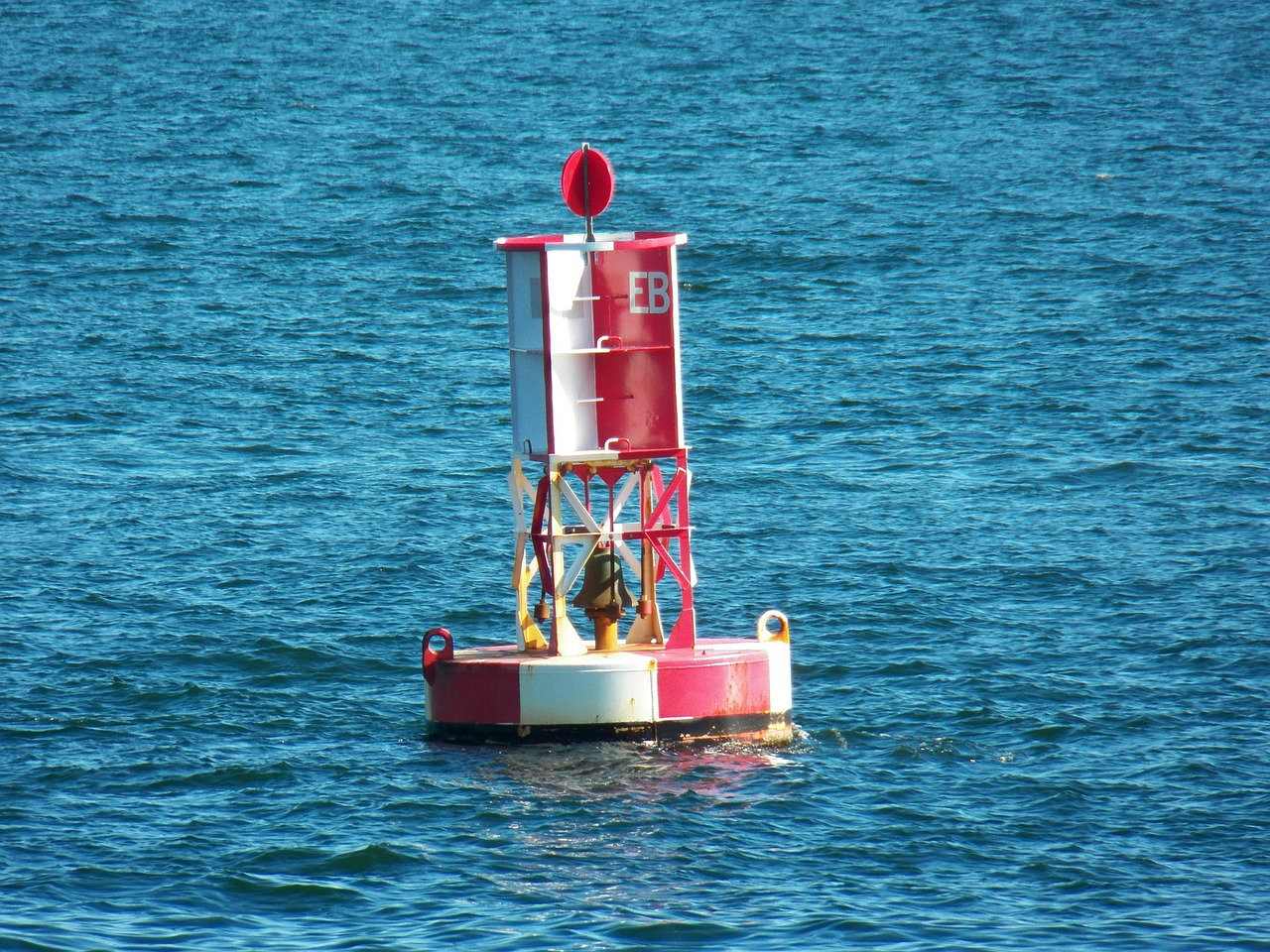
- Mooring Buoys
These buoys are not used for navigation; however, they are important buoys that permit sailors to moor their boats to. These buoys are usually white with a blue band and can be either cylindrical or spherical in shape. Even though mooring is permitting on these buoys, permission to moor on these buoys are needed.
- Isolated Danger Buoys
These buoys are used to signal to sailors that there is a certain danger or hazard, however, sailors are still able to pass it on either side. These buoys are usually black with red horizontal stripes and have what is called a double-sphere topmark. They are placed directly above the danger or hazard.
- Anchorage Buoy
This type of buoy signals to sailors that the area surrounding this buoy is a place where they can anchor their boats. Anchorage buoys are usually completely yellow with a black anchor on it.
- Special Aid Buoys
These buoys are typically all yellow and can come and all different shapes and sizes. They usually tell boaters that they are entering a special area or an area that allows for anchoring, traffic separation, fishnet areas, the presence of cables or pipelines, military exercise areas, and jetties.
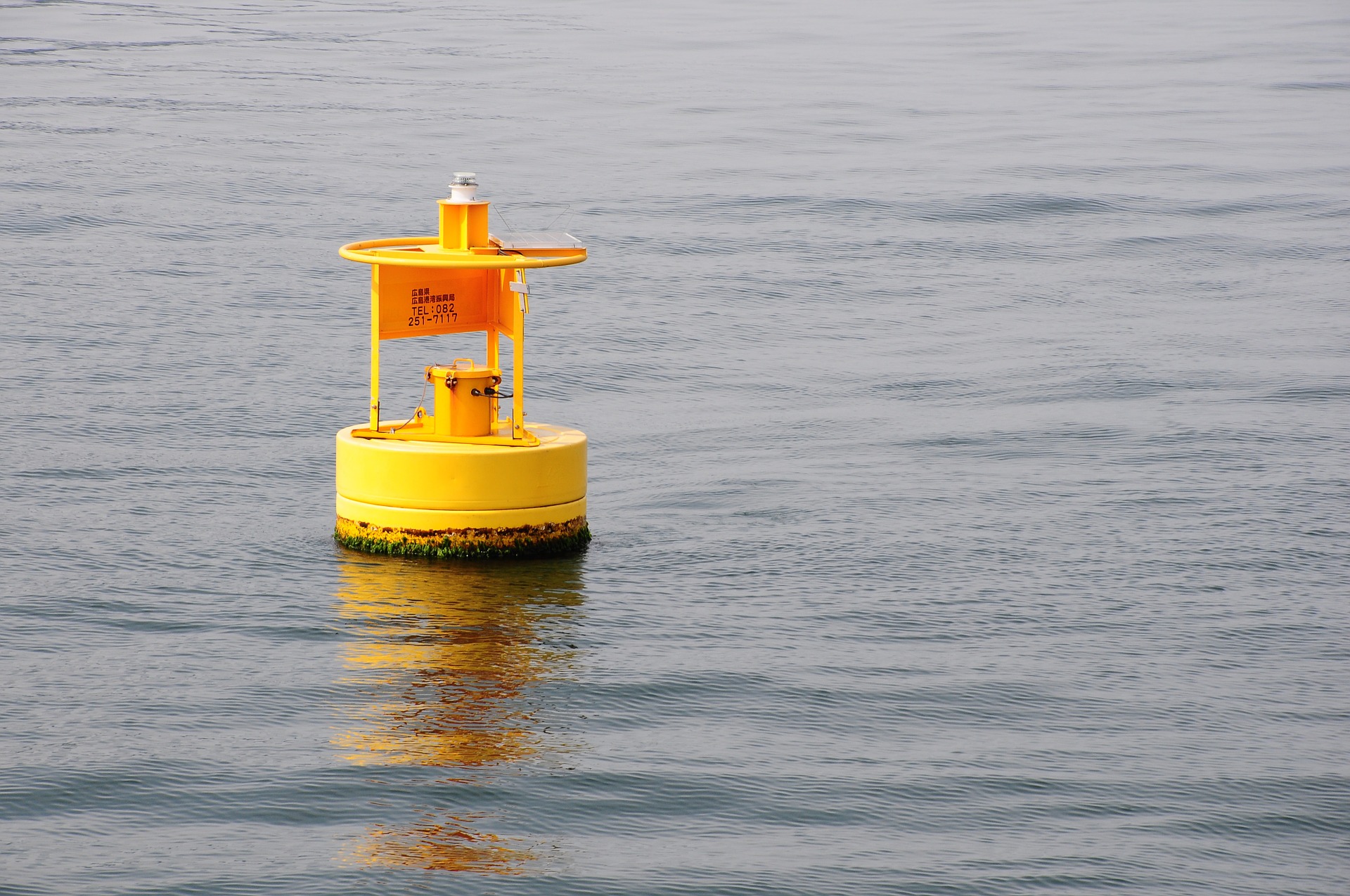
- Bifurcation Buoy
These buoys are used to alert sailors of the point where a channel divides into multiple branches. These buoys can appear on both starboard (right) and port (left) hand sides and have red and green bands on them. Much like the preferred channel aids and junction daybeacons, whichever color band is at the top will determine which is the main channel.
- Buoy & Marker Messages
Just as there are many different road signs that alert drivers of the many things they may encounter on the road, there are special warning buoys for sailors navigating their boats. Orange and white navigating aids exist on the water for this reason. While their colors remain consistent, the symbols they portray do change.
-
- Diamond
If one of these buoys has a diamond shape on it, this is an alert to all boaters that there is danger or hazards in this area.
-
- Circle
If these buoys have a circle on them, this signifies that there are restricted operations in this area. These restricted operations will be specified by a specific speed limit indicated within the circle, a warning to reduce your speed, or other directions to aid sailors while they navigate.
-
- Diamond + Cross
If there is a diamond with a cross, these are exclusion buoys, which means that boats are prohibited in this area.
-
- Square
If these buoys have a square on them, these are information buoys that provide helpful information to all navigating boaters. This information can be directions, distances, and even locations such as boat docks or gas docks.

Give-Way on the Water Rather Than Right of Way
As previously stated, navigating a boat on the water is very different than driving a car on the road. The boating rules of the road are present to help you understand exactly what to do while you’re sailing your boat around other boats on Rhode Island waters. As
BoatU.S. explains, boat navigation rules are not guidelines to knowing exactly who is liable if a collision should occur, but rather, for you to sail and actively try to avoid a collision by knowing the proper way to navigate your boat. When it comes to sailing, “right-of-way” does not exist in boat navigation rules. On the water, boats are classified as either Give-Way vessels or Stand-On vessels.
It is extremely important to understand and know which vessel you are in order to properly navigate and avoid collisions. The Give-Way vessel is the boat that has the responsibility of making their intentions known to the other vessel and must move out of the way or, give-way to the other vessel. When you are the Give-Way vessel, you give the Stand-On vessel the right to keep going while you move out of their way.
On the other hand, if you’re the Stand-On vessel, you have the responsibility of accepting and understanding the intentions of the Give-Way vessel. As the Stand-On vessel, it is important that you don’t change your speed or course as the Give-Way vessel is passing by. As the Stand-On vessel, after acknowledging the Give-Way vessel you must trust that they will maneuver their boat around yours.
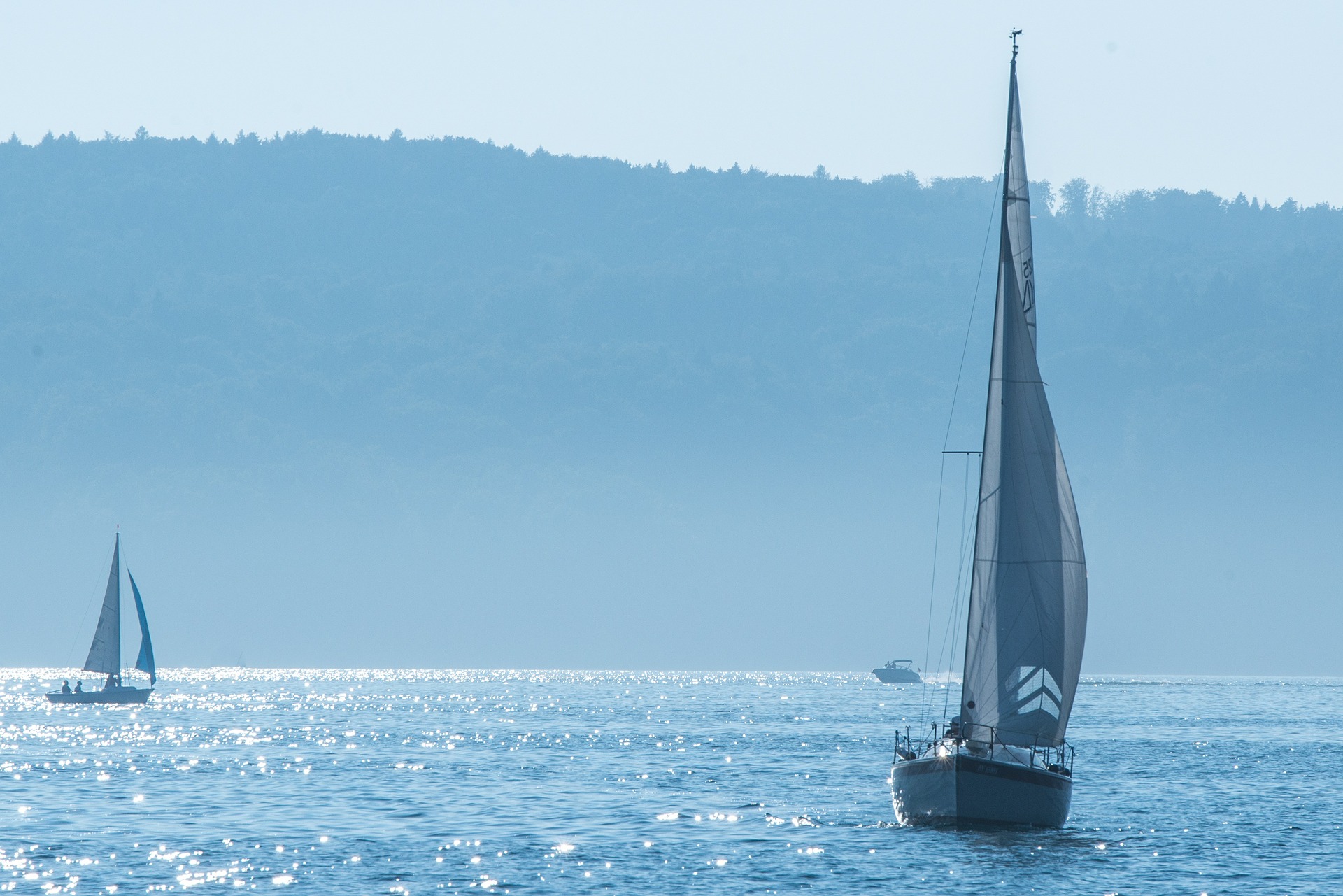
What Side Do You Pass an Oncoming Boat?
One of the three main collision situations that can arise while navigating is known as a meeting situation. A meeting situation is when two vessels run the risk of colliding head-on with one another. In the event that this should occur,
BoatU.S. shares that neither vessel really has the “right-of-way” in this situation. Both vessels should just maneuver as safely as possible in order to avoid colliding with one another. Boat navigation rules provided by the USCG, instruct that the vessels can either pass one another port (left)-to-port (left) or starboard (right)-to-starboard (right). All this means is that the left or right sides of both boats will be passing each other. While either side works to pass a vessel in a meeting situation, port-to-port passing is preferred but of course, whichever is needed should and must be done. Whichever side you choose, you most definitely can’t forget to signal each sailor and let them know which way you’re going. To signal a port-to-port passing both vessels must send out one short horn blast about one second long. For a starboard-to-starboard passing, both vessels must send out two short horn blasts about one second in length for each.
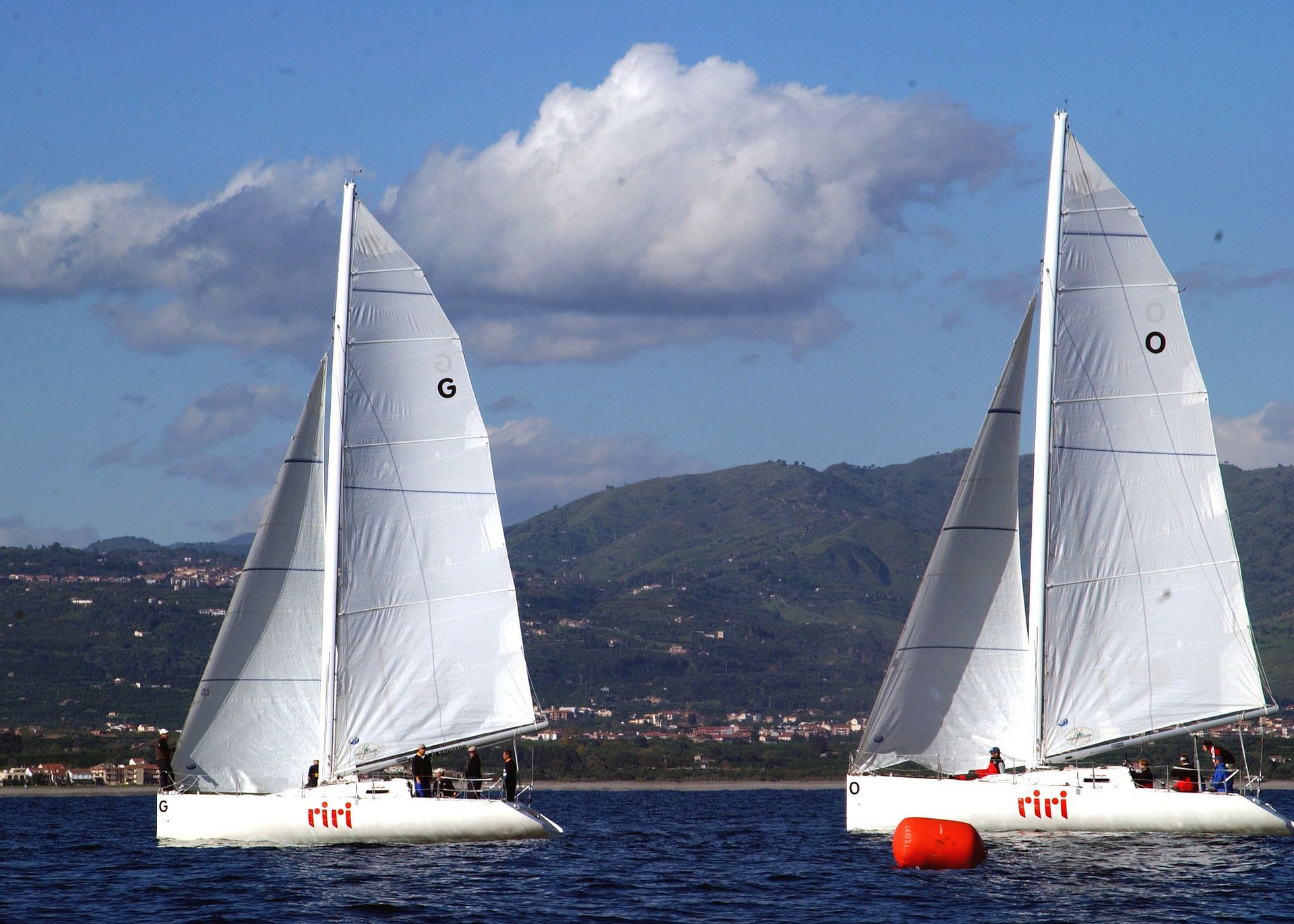
How to Navigate a Boat in the Fog
Getting caught in dense fog is already extremely dangerous while driving and even more so when navigating a boat. However, the weather on the water can be unpredictable so you never really know when dense fog will roll in. The fancy boating electronics are helpful but virtually useless without the ability to see anything. If you ever find yourself out on the water and notice fog rolling in there are a few things you can do in order to help you navigate safely.
The first thing that you must do is stay calm; panicking will only cause you to feel more stressed and won’t allow you to think clearly.
BoatU.S. recommends that as soon as you notice small hints of fog immediately turn on all of the necessary navigational instruments that you will need. This is because your instruments need some time to turn on, load, and get their bearings to that they may work properly. If you wait until it’s too late their loading process will seem like it’s taking forever, and when you can’t see anything in front of you, it can make you rather frantic. Turn on your navigation lights, test your horn, have your bell ready if you should need it, and most importantly, have your safety gear ready to go. Everyone on board should be wearing a life jacket at all times in the event that fog should roll in. Each lift jacket should be equipped with a whistle and a strobe, which is a special flashlight that is extremely bright and can be visible from very far away. These are very important items because if you happen to go overboard in the middle of a fog no one will be able to see you.
Make sure that you are not solely relying on your technology because they will be useless when the fog comes in. Use your compass and plot your course and other important information, such as dangerous spots, on your paper charts. Everyone should be on watch and helping to look for any dangers that lie ahead. If there are enough crew members aboard, someone should be at the helm helping to guide the person navigating through the fog. There should also be another crew member tasked with communicating with other boaters over the VHS radio. Navigating in fog can be very frightening but the key is preparation. You never really know exactly when and where you will encounter fog which means you should always be prepared for it.

How Do You Navigate a Boat at Night?
Similar to how navigating in fog is very difficult, navigating at night is also very difficult. Even if you are extremely familiar with the waters you are sailing, the darkness can make them unrecognizable to you. Due to the absence of light at night, boats communicate their intentions with other sailors through different navigation lights. According to the
USCG, boat navigation rules state that there are four colors of lights that boats use when navigating at night which also correspond to different sides of a boat.
- Red Lights
The red light is usually located on the port (left) side of a boat.
- Green Lights
The green light is usually located on the starboard (right) side of a boat.
- White/Yellow Lights
Some boats have white lights in the bow (front) of the boat along with red and green lights. However, if you see only one single white light that means that you have encountered the stern (back) of a boat.
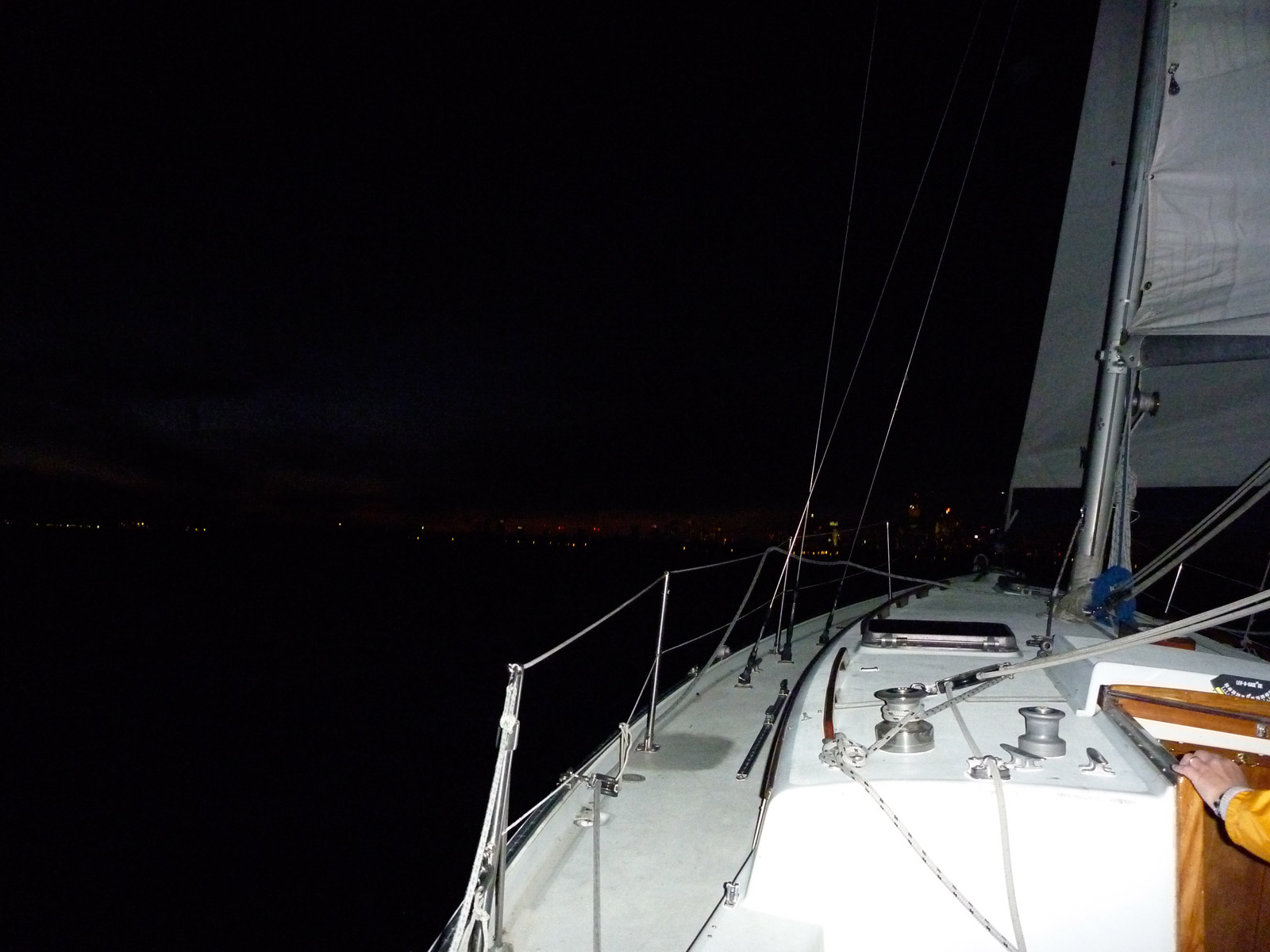
Depending on the light that you see in the dark while navigating, it will determine what vessel you are, either Stand-On or Give-Way, and what course of action you should take. According to
DEM and the RI Handbook of Boating Laws and Responsibilities, there are specific courses of action to take when encountering vessels at night based on their navigation lights.
- Single White Light
If you see only a single white light this means that you are overtaking the other vessel which means that you are the Give-Way vessel and they are the Stand-On. You now have the responsibility of moving out of their way by wither going starboard (right) or port (left).
- Green & White Lights
If you happen to see both a green and a white light this indicates that you are now the Stand-On vessel while the other boat coming in your direction is the Give-Way. They are tasked with moving out of your way while you continue. However, that does not mean that you shouldn’t be prepared to move out of the way in the event that they do not. The other operator may not have seen you in the dark or perhaps may not know the navigation rules. Always be alert and prepared to act.
- Red & White Lights
If you see both a red and white light this means that you once again are the Give-Way vessel and the other boat is the Stand-On vessel. You must move out of their way by either slowing down and allowing them to pass, or you can turn starboard (right) away from them.
- Red & Green Lights
If you happen to see both red and green sidelights of another vessel that signals that they are coming straight at you so you must change course immediately and move out of the way.
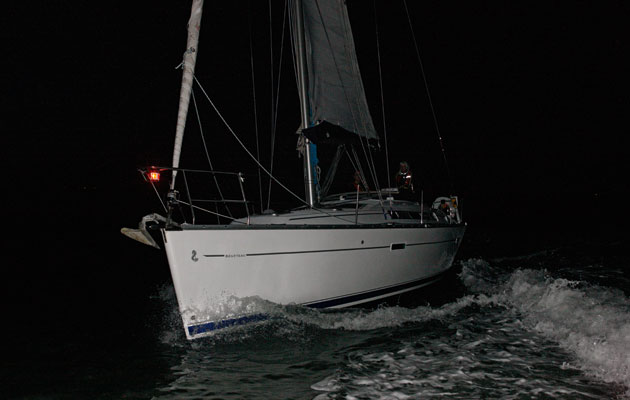
- Sailboat Encounters with Green Lights
If you are navigating and only see a green light you are most likely approaching a sailboat. Sailboats are always the Stand-On vessels and other boats are the Give-Way vessels. The red light on the sailboat means that as the Give-Way vessel you must turn to port (left).
- Sailboat Encounters with Red Lights
If you come across only a red light while navigating this most likely means that you have probably come across a sailboat. Just as before, sailboats are always the Stand-On vessels, so make sure to give-way and move your vessel to starboard (right).
Large vessels can also be very tricky to make out on the water when navigating your boat at night. Learning to distinguish commercial vessel lights are extremely important. Usually, since commercial vessels are rather large, there will often be a large unlit space between the first light towards the bow (front) of the boat, all the to the stern (back) of the ship. If you happen to see this while navigating your boat at night make sure to give them a lot of space because due to their size, they can’t easily move their vessel.
Navigate To East Greenwich Marina and Dock With Us!
No need to keep searching for a marina to dock your boat in anymore; come
dock with us! East Greenwich Marina is the perfect place for you to dock your boat and enjoy our scenic views as well as our busy town filled with tasty food and fun activities. With over 85 slips, our marina is fully equipped to accommodate boats up to 85 feet with your choice of seasonal or overnight docking during the summer months. And with the summer months winding down, we are here to help and offer all RI boaters much needed in-water winter boat storage. Contact us and come on down, we’ll save you your spot as you make your way down safely following all your boat navigation rules.
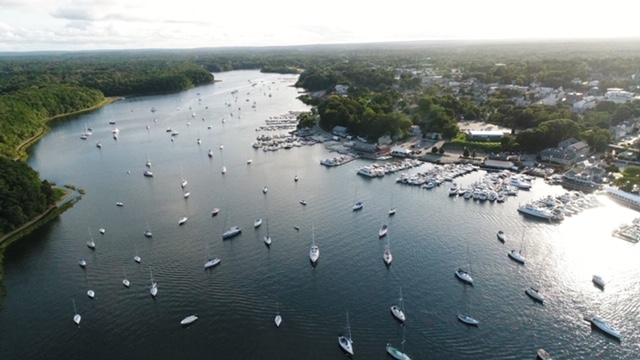
Sources: USCG, Boat US, Boat-Ed.com, Off The Throttle, Aceboater.com, Lakegeorge.com, National Maritime College

